
“When writing copy, assume that your product is the last thing on your reader’s mind.” Bob Bly shares that great insight in his Bob Bly’s Secrets of Successful Business-to-Business Direct Marketing special report.
And yet, much B2B content marketing is relatively immature, focusing on the product, features, and benefits. As the research reveals:
-
Eccolo Media says “B2B buyers think white papers have too much marketing hype, not enough truly unbiased information, too general of information, and they’re too long”
B2B buyers think white papers have too much marketing hype, biased, too long & general via @eccolomedia
Click To Tweet
-
Forrester reports that 71% of B2B marketers say “…their content features case studies or customer stories, [but] only 3% admit this is a primary focus.”
What should you do in your content? What actually works?
Questions like these bothered me for a long time. I did some research, thinking, and networking to find out what really works. I checked 100 B2B tech and software company home pages to see how many assume that their product is the last thing on their audience’s mind.
Here’s what I’ve concluded.
Buyers don’t decide the way you think they do
You might think B2B buyers move through a fairly linear process — recognize the problem, find out what they need in a solution, research possible solutions, request and evaluate proposals, make their decision, and evaluate it while in action. Simple and straightforward, right?
Well, that’s not really how buyers’ minds work. They move through stages of awareness in more of a “spider-web” fashion. This graphic from Forrester illustrates what would take me thousands of words to explain:

Image source: Forrester
Your home page most likely is the single most-viewed page of any of your content over the long term. If you aim for perfection in your marketing, that’s the place to do it. I checked out 100 B2B software and tech company home pages to see if they discussed:
- Buyer pain
- Fear of loss
- Business value
- Personal value
- Stakeholder conflicts
- Product features and benefits
During the evaluation, I marked a “yes” or “no” for each of the six features. I gave a company credit for a feature if it addressed it in even the smallest way.
1. Does it address buyer pain?

More than three-fourths of the companies weren’t sophisticated enough to include content that got to their audience’s pain points. And of those that did, most did not make me “feel it.” Pain got just a brief mention (a few words or a sentence or so).
Opportunity missed.
Google, Motista, and CEB’s Marketing Leadership Council surveyed 3,000 purchasers and 36 B2B brands in various industries. They found that “B2B customers are significantly more emotionally connected to their vendors and service providers than consumers.”
#B2B customers are more emotionally connected to vendors & service providers than consumers via @google
Click To Tweet
Why? Think about the stakes B2B buyers face. The purchase could require a six- or seven-figure investment. They have to justify their decision to an average of 5.4 people and sometimes 20 or more. Make a bad decision, and they’ve suddenly lost lots of credibility and respect. They could even get fired.
2. Does it address fear of loss?

Nothing is a more powerful motivator for any human than fear of loss. But, just three of the companies discussed this anywhere on their home page.
While the headline on your home page would be the most powerful place to address fear, none of the reviewed websites did so.
Opportunity missed.
How do you convey how your product or service can alleviate that fear or other pain? Copywriter Dan Kennedy once said:
When you understand that people are more likely to act to avoid pain than to get gain, you’ll understand how powerful this first formula (problem-agitate-solve) is.
A Science study found that when something is framed as a “loss,” people are more likely to take steps to avoid that “loss” even if the net effect is the same.
People are more likely to act to avoid pain than to get gain says @dankennedy_nu #contentmarketing
Click To Tweet
HANDPICKED RELATED CONTENT:
3. Does it cover product features and benefits?

Most do. However, how many cover these to the extent prospective buyers want?
The home pages generally fell into two categories:
- Thoroughly discussed major features and benefits (usually three to six of each)
- Casually mentioned without any major highlighting of features and benefits
Opportunity gained (maybe). Since buyers prefer other types of content to features and benefits, their inclusion may not be as valuable as you think.
4. Does it address possible stakeholder conflicts?

Well, this is an easy chart to read. Not a single B2B company addressed stakeholder conflicts.
Opportunity missed.
Group conflicts peak early in most buying journeys, according to CEB Group research. CEB found these strategies work best for creating consensus:
- Focus on common ground among stakeholders through shared learning and content topics preferred by multiple parties.
- Decrease perceived risk and increase perceived rewards of “motivating mobilizers” or those who can wield influence over the decision.
- Equip mobilizers with the tools they need to be effective, such as content on communicating the value of your solution to others in your organization.
The research also revealed that while personalization is important, you have to be careful about how you do it. When you personalize the message too much, the buyer focuses narrowly on their own needs, ignoring those of others involved in the decision. And you can guess what happens to the decision when everyone chooses to go their own way.
HANDPICKED RELATED CONTENT:
5. Does it discuss benefits to the business?

Here, B2B websites did a nice job overall, and some were better than others.
The better websites gave specific and compelling benefits relevant to their products and services. The not-as-good websites offered fairly generic benefits that just about any software could provide.
Opportunity gained (mostly).
6. Does it mention personal benefits?

Personal benefits play such a big role in B2B buying, but prospects rarely think companies help them get those benefits. Kapost said just 31% of B2B buyers think brands provide personal value.
As you can see, my research supports that claim but is a little more extreme — only 2% mentioned personal benefits.
2% of #B2B buyers think brands provide personal benefits via @dansteltercopy #contentmarketing
Click To Tweet
Opportunity missed.
Wait, aren’t you supposed to present your product or service so the buyer sees the business value in it? Absolutely. However, buyers consider personal benefits with twice the weight of business ones. Check out that and more reasons in this graphic from Kapost:

Image source: Kapost
Some other stats also raised my eyebrows:
- 68% of buyers who see a personal value will pay a higher price for a service
- 71% of buyers who see personal value will purchase a product
71% of buyers who see personal value will purchase a product via @kapost #contentmarketing
Click To Tweet
Clearly, your content needs to emphasize personal value in addition to the benefits to the business.
#Content needs to emphasize personal value in addition to business benefits says @dansteltercopy
Click To Tweet
How to do it all
You now have a convincing case to add these ingredients to your content marketing to make it more effective. But, how do you pull it off? Try this simple, five-step formula and start with the content on your home page:
- Begin with the pain to engage and build interest — your headline could be the best place to do this.
- Detail the business and personal benefits offered.
- Address the stakeholder conflicts to build consensus.
- Introduce your product/service benefits.
- Show the features that make those benefits possible.
Conclusion
In terms of content about product features and benefits, and business benefits, my research shows that B2B companies address them well on their home pages. However, I also see that big opportunities are still available to better connect with B2B buyers — opportunities to directly address stakeholder conflicts, fear of loss, buyer pain, and personal value.
HANDPICKED RELATED CONTENT:
Want to solve your content marketing pains? Subscribe to the free daily or weekly CMI newsletter with helpful tips, how-to’s, trends, and more.
Cover image by Viktor Hanacek, picjumbo, via pixabay.com
The post 4 B2B Content Secrets You Fail to Use appeared first on Content Marketing Institute.


 One of the most exciting areas of finance now has its own stock market index.
One of the most exciting areas of finance now has its own stock market index. 















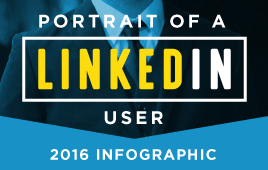
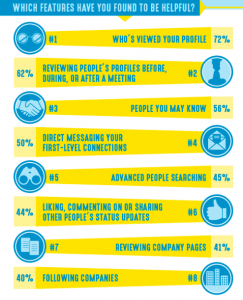
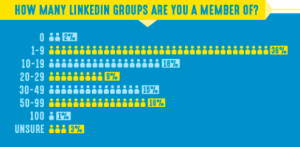
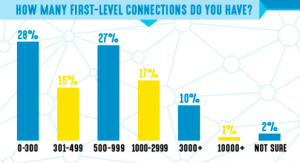
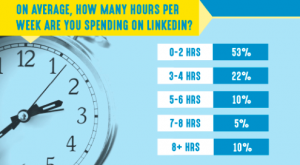
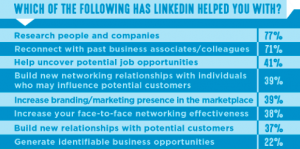

 A well-supported sales team can focus on what they do best – getting the sale.
A well-supported sales team can focus on what they do best – getting the sale.



























